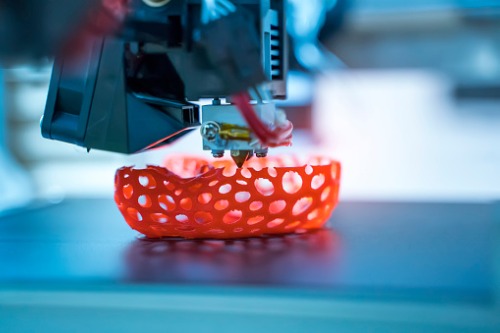
The advent of 3D printing has provided students with alternative ways to learn, such as bringing complex subjects like STEAM to life, and this technology’s benefits are reaching far beyond the classroom.
With 3D printing now becoming mainstream within many schools and businesses due to its flexibility and ability to unleash creativity, it has also triggered a change in the way organisations build and design their products.
Apart from reducing cost and improving products by promoting design thinking principles such as latticing and part consolidation, 3D printing has seen big savings in supply chains, product storage and waste management.
This transformative technology is also having a significant impact on the future of engineering and design. For example, products that were previously not viable to print due to size, accuracy and material constraints have now become feasible. The automotive industry, for example, now enjoys a much shorter lead time in production as 3D printing allows for a much faster development and testing of components.
In the production of end-use parts, 3D printing is increasingly being integrated into augmented manufacturing processes. For instance, dentistry companies now have a more cost-effective method of creating digitally engineered molds for patients.
“The future of product development can also be aided by 3D printing. The design of consumer goods such as electronics depends heavily on current market needs,” Eric Holtsmark, general manager - strategy, transformation and technology at Konica Minolta Australia, said.
“As these needs change, 3D printing not only offers manufacturers a way to adapt quickly by shortening the design stage, but also the ability to produce cost-effective short production runs to test the market, or offer customised versions of a product”.
Holtsmark pointed out that rapid prototyping in the pre-manufacturing stage lets businesses manufacture faster and reach markets sooner.
“Businesses also benefit from improved risk reduction and agility as they can study prototypes to reduce faults and optimise the product before it goes to market,” he said.
Rethink and rebuild
Industries that can directly relate to the opportunities presented by 3D printing should invest time in rethinking and rebuilding their workflows and processes in order to maximise 3D printing and to understand the freedom it provides. Businesses in these industries need to prepare their internal systems first to ensure a smooth, successful adoption of the technology.
Likewise, education institutions must explore 3D printing more deeply to prepare future designers and engineers for the realities of the future workplace, equipping them with the expertise needed to drive the rapid development of end-use parts in manufacturing.
“The evolution of 3D printing can help to power the world of design, health, engineering and manufacturing, create new jobs and increase innovation on a global scale,” Holtsmark said.
“Promoting sustainability, efficiency and innovation, 3D printing can deliver complex, accurate prototypes and end-use parts. 3D printing will revolutionise key industries and change the future landscape of engineering and design”.


